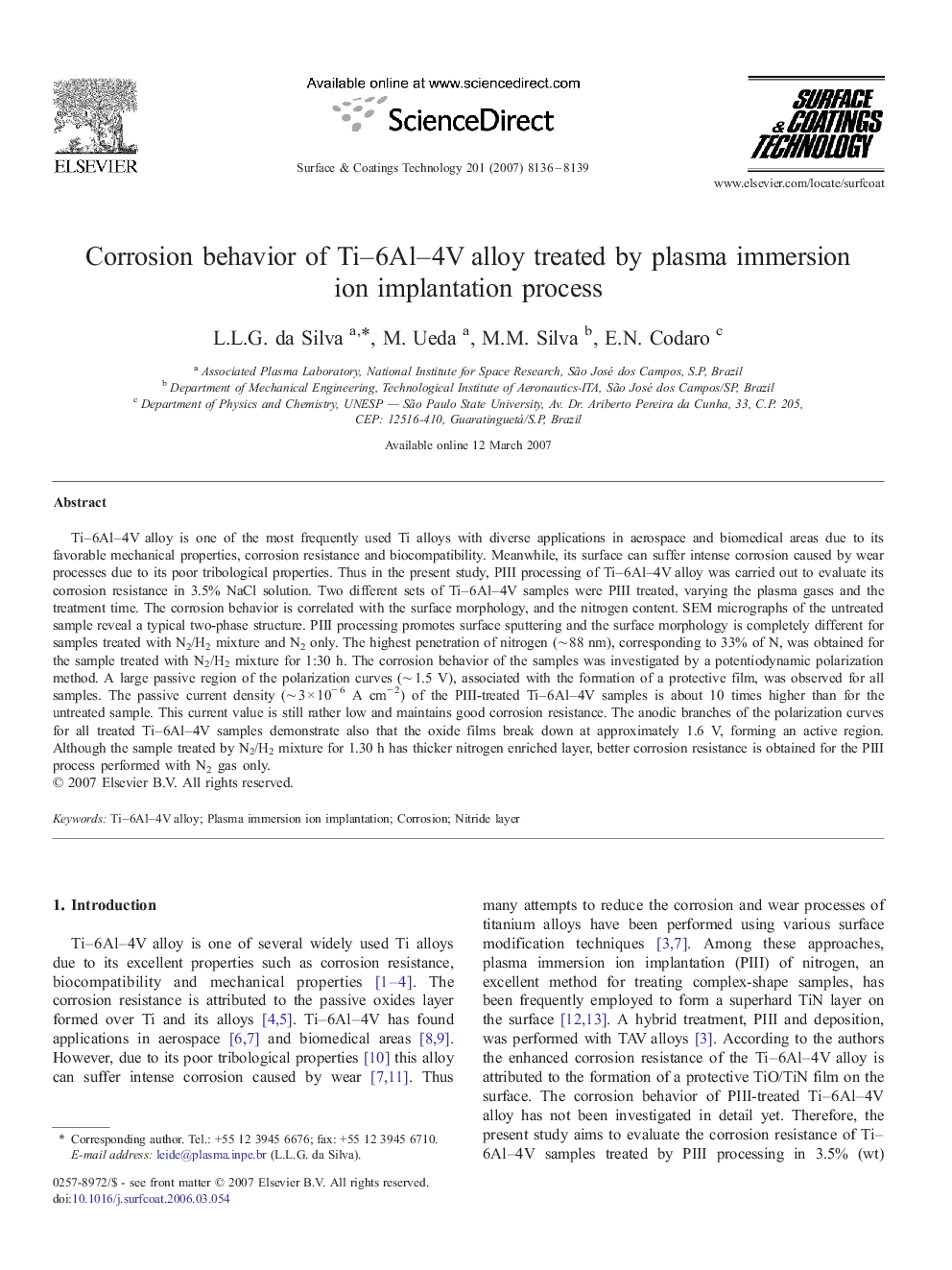| کد مقاله | کد نشریه | سال انتشار | مقاله انگلیسی | نسخه تمام متن |
|---|---|---|---|---|
| 1662975 | 1517697 | 2007 | 4 صفحه PDF | دانلود رایگان |

Ti–6Al–4V alloy is one of the most frequently used Ti alloys with diverse applications in aerospace and biomedical areas due to its favorable mechanical properties, corrosion resistance and biocompatibility. Meanwhile, its surface can suffer intense corrosion caused by wear processes due to its poor tribological properties. Thus in the present study, PIII processing of Ti–6Al–4V alloy was carried out to evaluate its corrosion resistance in 3.5% NaCl solution. Two different sets of Ti–6Al–4V samples were PIII treated, varying the plasma gases and the treatment time. The corrosion behavior is correlated with the surface morphology, and the nitrogen content. SEM micrographs of the untreated sample reveal a typical two-phase structure. PIII processing promotes surface sputtering and the surface morphology is completely different for samples treated with N2/H2 mixture and N2 only. The highest penetration of nitrogen (∼ 88 nm), corresponding to 33% of N, was obtained for the sample treated with N2/H2 mixture for 1:30 h. The corrosion behavior of the samples was investigated by a potentiodynamic polarization method. A large passive region of the polarization curves (∼ 1.5 V), associated with the formation of a protective film, was observed for all samples. The passive current density (∼ 3 × 10− 6 A cm− 2) of the PIII-treated Ti–6Al–4V samples is about 10 times higher than for the untreated sample. This current value is still rather low and maintains good corrosion resistance. The anodic branches of the polarization curves for all treated Ti–6Al–4V samples demonstrate also that the oxide films break down at approximately 1.6 V, forming an active region. Although the sample treated by N2/H2 mixture for 1.30 h has thicker nitrogen enriched layer, better corrosion resistance is obtained for the PIII process performed with N2 gas only.
Journal: Surface and Coatings Technology - Volume 201, Issues 19–20, 5 August 2007, Pages 8136–8139